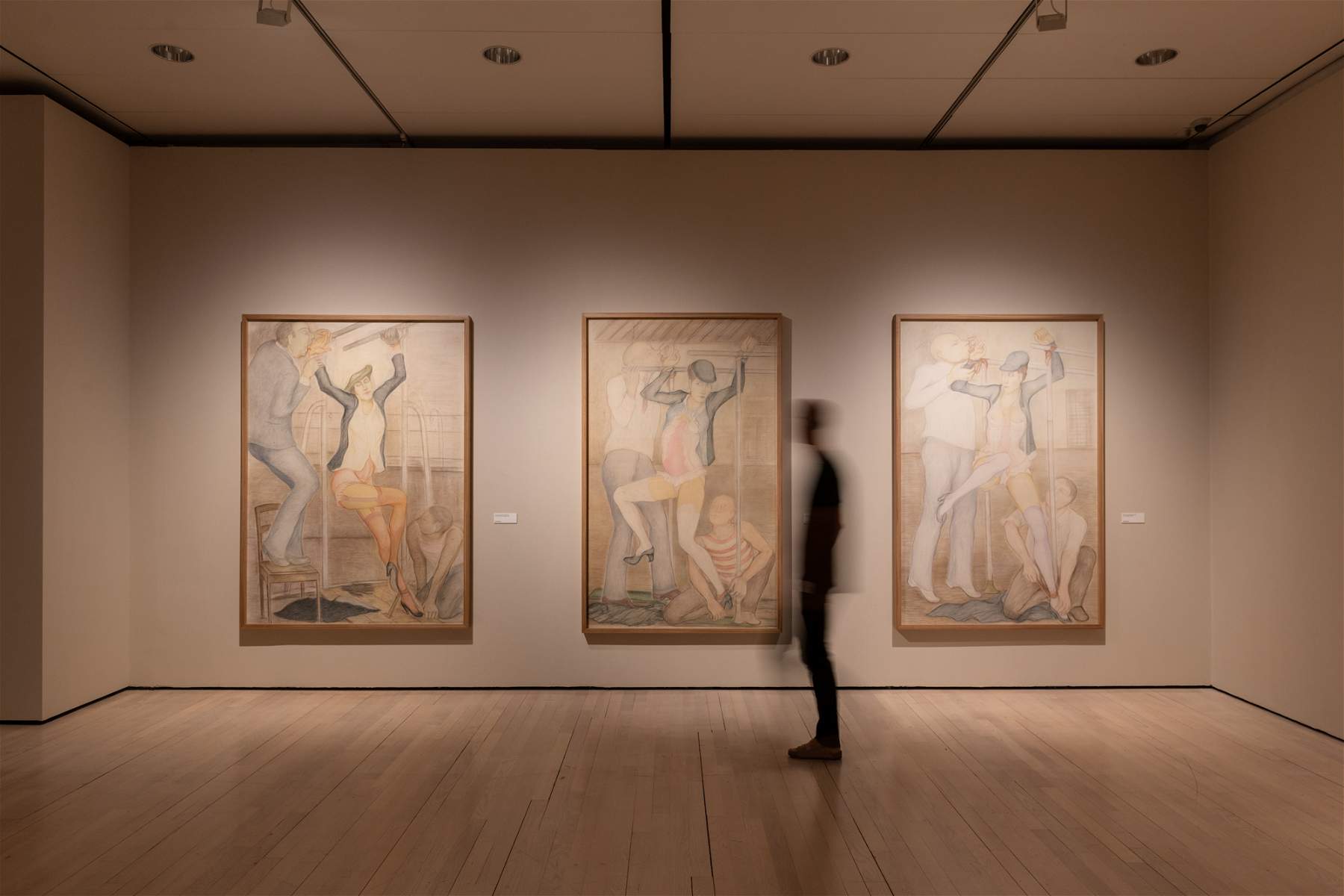Through Oct. 9, the Mart in Rovereto is hosting Art and Eros. Klossowski, Molinier, Bellmer, Rama, an exhibition that takes as its starting point a substantial nucleus of drawings by Pierre Klossowski (Paris, 1905 - 2001), brother of painter Balthus and a prominent 20th-century intellectual. An intellectual, novelist and translator, from the 1950s he began illustrating his own novels. First in pencil and then in colored pastels, the drawings not only take up scenes already present in his literary works but also delve into one of the central themes of his production:eroticism.
Born in 1905, Pierre Klossowski is one of the key figures of twentieth-century France, among the leading figures in the rediscovery and reinterpretation of the work of the Marquis De Sade, the focus of his Sade prossimo mio. A reference for important philosophers, including Michel Foucault and Gilles Deleuze, Klossowski was an intellectual, novelist and translator. It was from the 1950s that he began illustrating his novels, and from 1965 - the year of publication of The Bafometto - he devoted himself exclusively to drawing, abandoning literary activity. First in pencil and then in colored pastels, his illustrations in addition to taking up scenes already present in his literary works delve into what has been one of the central themes of his production: eroticism. And this happens for a reason: the depiction breaks through the limit imposed by the written word; the drawing supplants the word with its immediacy. Klossowski’s graphic work upholds a “dastardly philosophy” that explores relentless sexual impulses: the characters, departing from social conventions, are enraptured by abnormal conduct that is irreverent to reason.
In the exhibition, the largest nucleus of Klossowski’s works ever presented in Italy, 48 large-format drawings, establishes a comparison with the production of three other artists: Carol Rama, Hans Bellmer and Pierre Molinier. Deeply influenced by the Surrealist experience and frequenters of the same circles, they explore the relationship between art and eros with entirely different outcomes. Klossowski’s entire production, while daring and provocative, remains controlled, intellectual, as if harnessed in a tension that seems never to be resolved. In contrast, Rama, Molinier and Bellmer explore their own passionate worlds in a visceral, psychological, instinctive, irrational, even deprecatory way.
The exhibition begins with a number of Klossowski’s tableaux vivants, drawings that reach two meters in height and enact the erotic events of his literary works, particularly Roberte ce soir, the heart of the trilogy The Laws of Hospitality. The main character in this series of novels is Roberte, alter ego of Klossowski’s wife and bride of Octave. Subject to her husband’s laws, the protagonist must indulge the perversions of the house guests. The drawings are the starting point from which the key themes of Klossowski’s eroticism emerge: religious ritual, aggression, fetishism and adolescent curiosity. An entire room of the exhibition is devoted to the latter central subject: puberty represents the discovery of sex in a curious, free, voyeuristic way.
Klossowski’s entire production, while bold and provocative, remains controlled, intellectual, as if harnessed in a tension that never seems to resolve itself. On the contrary, Rama, Molinier and Bellmer explore their own passionate worlds in a visceral, psychological, instinctive, irrational, even deprecatory way. The exhibition continues with a section devoted to Carol Rama, Golden Lion for Lifetime Achievement in 2003. Characterized by a strong erotic charge with enigmatic psychic implications, painting and drawing become tools to give free rein to sexuality - otherwise relegated to the sphere of intimacy - and to the most secret unconscious. Among the first women to devote herself to subjects considered scabrous, she represents with unprecedented force the imperfect, undone, impeded female body.
Totally different is the poetics of Pierre Molinier: a “fluid” hedonist forerunner of body art, he shuns through photography what he considers the coercions of morality. Some 50 works are on display at the Mart: self-shots and photomontages in which the author appears en travesti in his Paris home. Here transgression veers toward fetishism and BDSM, among stilettos, dolls and sex toys. Finally, Hans Bellmer is predatory. His production is more organized and scientific. In photographs and collages body and psyche interpenetrate violently, merge and mix responding to more extreme and disturbing urges. He himself builds a sex doll to be portrayed with surrealist taste and perverse gaze, representing the abused body and possession.
The project is complemented by valuable video content including the screening of a selection of scenes from Roberte ce soir, a 1979 feature film starring the artist himself and his wife Denise Marie Roberte Morin-Sinclaire. Art and Eros is the first chapter of a Heretical and Erotic trilogy dedicated to some of the leading “heretics” of the 20th century: artists who, by their lives and their choices, questioned and deviated from the moral canons of their time. This first stage will be followed in November by Heresy and next year by an in-depth exhibition on the figure of Leonor Fini.
Exhibition recommended for an adult audience.
For all information, you can visit the Mart’s official website.
Pictured: the layout of the exhibition. Ph. credit: Ulrich Egger
 |
| At the Mart in Rovereto, four artists discuss the theme of Eros in an exhibition for adults |
Warning: the translation into English of the original Italian article was created using automatic tools. We undertake to review all articles, but we do not guarantee the total absence of inaccuracies in the translation due to the program. You can find the original by clicking on the ITA button. If you find any mistake,please contact us.